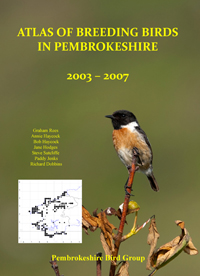Black-headed Gull - 1994
 Monday, December 19, 2011 at 9:40AM
Monday, December 19, 2011 at 9:40AM Winter visitor and passage migrant, formerly bred
The Black-headed Gull was recorded by Mathew (1894) as only an autumn and winter visitor. Lockley et al. (1949) stated that there was said to be a large colony of Black-headed Gulls breeding on Caldey in 1662 and that Dowrog Pond and Trefeiddan were colonised in 1948. The former colony built up to 80 pairs by 1958 and died out shortly after 1966, the latter reached a peak of 18 pairs in 1958 and also became deserted around 1966. Three nests were found on Ramsey in 1962 and 16 pairs bred there in 1964, while up to four pairs bred on Skomer between 1965 and 1970.
Black-headed Gulls arrive in Pembrokeshire from early July, when small parties of adults accompanied by juveniles can be seen flying overland towards the coast and also angling across Cardigan Bay from the north-east. These are presumably birds that have bred in mid-Wales and England. The main arrival takes place in October, appears to be largely nocturnal and is probably Continental in origin. In winter they are widely distributed throughout the county, on the estuaries, harbours and shorelines, but more extensively on inland fields, commuting daily from a number of well-established roosts at Poppit, Nevem Estuary, north Broad Haven—Goultrop, Fishguard Harbour, Llysyfran reservoir, Fowborough, Pembroke River, Angle Bay and Amroth— Saundersfoot. The British Trust for Ornithology's Winter Gull survey of 1985 found a total of 16,826 Black-headed Gulls at these roosts.
Wintering birds depart suddenly in March, presumably leaving at night. Thereafter, occasional small parties of adults are seen passing northwards throughout April and May and about 150 one- year old birds summer on the Cleddau Estuary, with a few others scattered around the coast.


Reader Comments